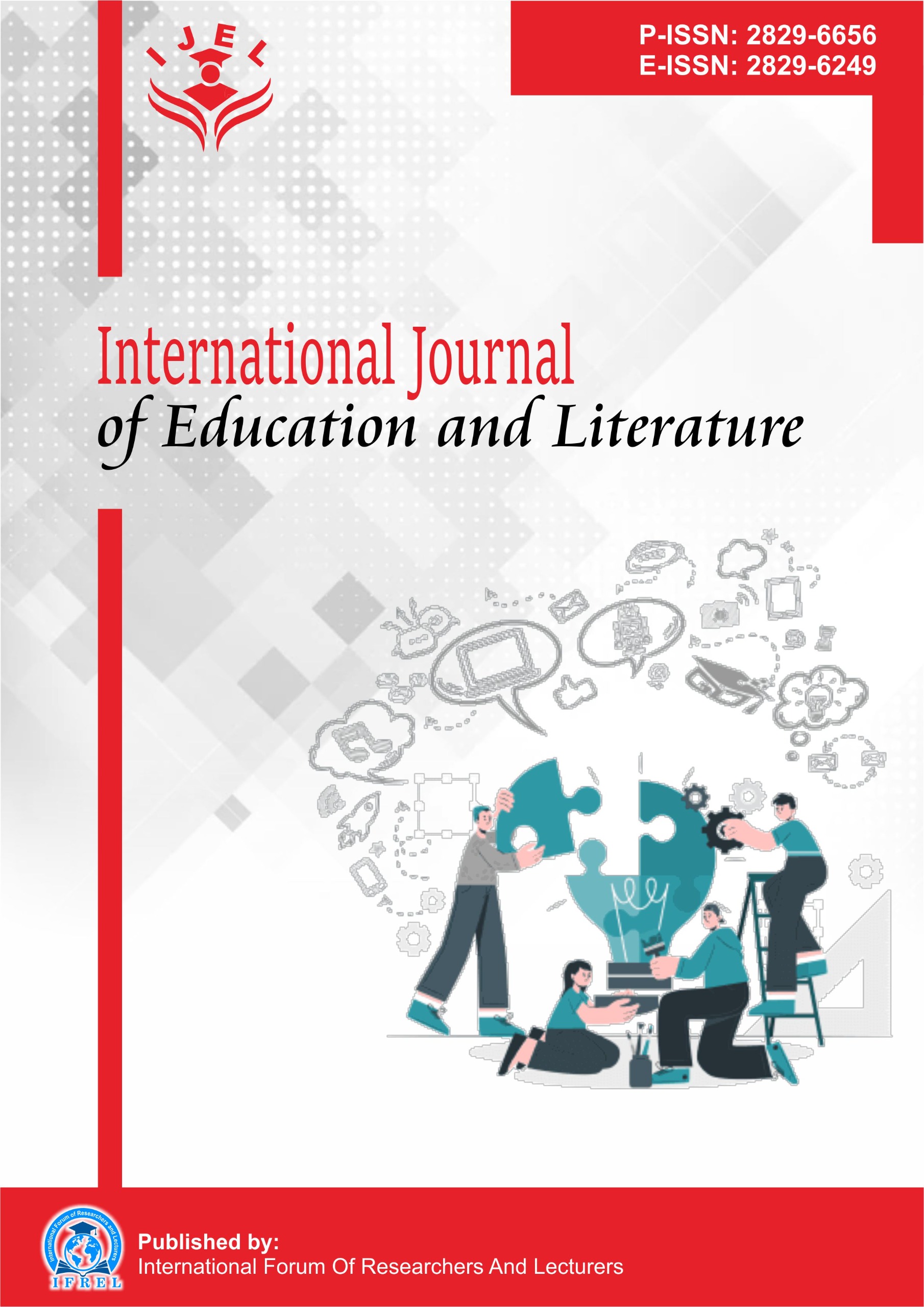Analysis of Students' Politeness in Indonesian in Interacting With Grade IV Teachers at SDN 1 Karangdempel
DOI:
https://doi.org/10.55606/ijel.v4i3.282Keywords:
Elementary School, Language Politeness, Learning Indonesian, Politeness Maxims, Teacher-Student InteractionsAbstract
One of the factors that determine the success of a character-based language learning process is the interaction between teachers and students. Polite language from students can show that they have the expected character, in addition to showing that teachers have helped students behave with polite language. Classes often do not meet expectations. Many students are still unable to pronounce good words. In the last two decades, there has been a significant decline in the implementation of polite language originating from Brebes Regency. Children believe that using impolite language is acceptable to their friends and following trends in their environment because of the abundance of impolite language in society. This causes people to use Indonesian less. The purpose of this study is to determine the politeness of Indonesian language students in interacting with teachers in grade IV SDN 1 Karangdempel. This study uses a qualitative research type. The approach used in this study is qualitative research with a descriptive approach. The location of this research is SDN 1 Karangdempel, Losari District, Brebes Regency, Central Java, Indonesia 52212. Based on research that has been done on the analysis of the form of politeness in Indonesian language in interacting with teachers in the learning process is polite. Because, in the implementation of the learning process can include several maxims including: Maxim of wisdom/wisdom, maxim of generosity, maxim of praise/appreciation, maxim of humility/simplicity, maxim of agreement/agreement, and maxim of sympathy. From several existing maxims it can be concluded that the maxim of humility/simplicity is the one most frequently found in the data of politeness in Indonesian language in class IV SDN 1 Karangdempel, Brebes Regency, because that maxim is the one that occurs most often in learning activities.
References
Brown, P., & Levinson, S. C. (2021). Politeness: Some universals in language usage. Cambridge University Press.
Chaer, A. (2020). Kesantunan berbahasa. Jakarta: Rineka Cipta.
Chaer, A., & Agustina, L. (2020). Sosiolinguistik: Perkenalan awal. Jakarta: Rineka Cipta.
Dewi, N., & Hendaryan, R. (2017). Kesantunan berbahasa pada tuturan siswa SMP. Jurnal Pendidikan Bahasa dan Sastra Indonesia Universitas Galuh, 1(2).
Diah, K. (2019). Peran bahasa dalam pengembangan ilmu pengetahuan.
Ferdhiana, Z. (2019). Pengaruh pembelajaran bahasa Indonesia terhadap pengembangan kesantunan berbahasa siswa kelas VIII SMPN 01 Ngunut tahun ajaran 2018/2019 [Skripsi, tidak diterbitkan].
Hana Yulisarani, N. (2022). Analisis kesantunan berbahasa siswa kelas 5 SD dalam berinteraksi dengan guru pada pembelajaran [Tesis, STKIP PGRI Pacitan]. STKIP PGRI Pacitan Repository. https://repository.stkippacitan.ac.id/id/eprint/970/
Kushartanti, Yuwono, U., & Lauder, M. R. M. T. (2009). Pesona bahasa: Langkah awal memahami linguistik. Jakarta: PT Gramedia.
Leech, G. (1983). Principles of pragmatics. London: Longman.
Leech, G. (2006). Prinsip-prinsip pragmatik. Jakarta: Universitas Indonesia Press.
Mislikhah, S. (2020). Kesantunan berbahasa. Ar-Raniry: International Journal of Islamic Studies, 1(2), 285–296. https://doi.org/10.20859/jar.v1i2.18
Mislikhah, S. (2020). Kesantunan berbahasa. Ar-Raniry: Jurnal Internasional Studi Islam. https://jurnal.ar-raniry.ac.id/index.php/jar/article/view/7384
Munirah, M., Subaedah, S., & Munir, A. (2022). Sikap berbahasa Indonesia masyarakat Desa Bissoloro Kecamatan Bungaya Kabupaten Brebes. Kredo: Jurnal Bahasa dan Sastra, 5(2). https://doi.org/10.24176/kredo.v5i2.6340
Nababan, P. W. J. (2021). Sosiolinguistik: Suatu pengantar. Jakarta: PT Gramedia.
Purwo, B. K. (2004). Deiksis dalam bahasa Indonesia. Jakarta: Balai Pustaka.
Rahardi, K. (2025). Pragmatik: Kesantunan imperatif bahasa Indonesia. Jakarta: Erlangga.
Ritonga, P., dkk. (2022). Bahasa Indonesia praktis. Medan: Bartong Jaya.
St. Mislikhah. (2014). Kesantunan berbahasa. International Journal of Islamic Studies, 1(2). https://doi.org/10.20859/jar.v1i2.18
Sugiarti, M., Rahayu, N., & Wulandari, C. (2017). Analisis ketidaksantunan berbahasa di SMP Negeri 18 Kota Bengkulu. Jurnal Ilmiah Korpus, 1(2), 150–156. https://doi.org/10.33369/jik.v1i2.4112
Sugiyono. (2016). Metode penelitian kuantitatif, kualitatif, dan R&D. Bandung: Alfabeta.
Sulistyo, E. T. (2013). Pragmatik: Suatu kajian awal. Surakarta: Sebelas Maret University Press.
Tarigan, H. G. (2019). Pengajaran pragmatik. Bandung: Angkasa.
Tarigan, H. G. (2022). Pengajaran pragmatik. Bandung: Angkasa.
Yule, G. (2017). Pragmatics (Jumadi, Penerj.). Banjarmasin: PBS FKIP Universitas Lambung Mangkurat.
Downloads
Published
How to Cite
Issue
Section
License
Copyright (c) 2025 International Journal of Education and Literature

This work is licensed under a Creative Commons Attribution-ShareAlike 4.0 International License.







